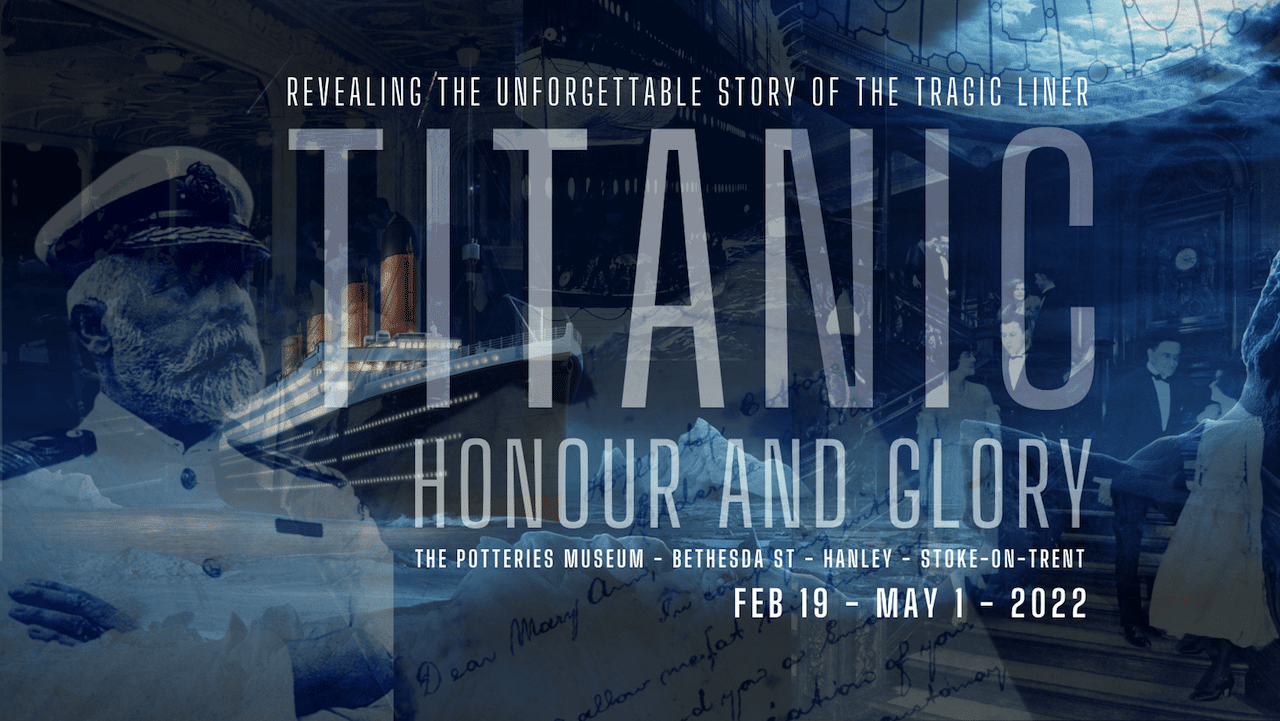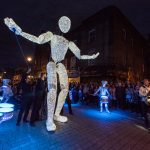Staffordshire Hoard reconstruction Helmet on Display
The Potteries Museum & Art Gallery and Birmingham Museums Trust have revealed two stunning reconstructions of a magnificent helmet contained within the Staffordshire Hoard.
Experts studied thousands of incredibly rare fragments – believed to be more than 1,300 years old – to build a picture of the original helmet. They then spent 18 months using both cutting-edge technology and ancient craft techniques to make stunning replicas of the internationally-important find.
The Staffordshire Hoard was found in a field near the village of Hammerwich, near Lichfield, in Staffordshire in 2009. It’s the largest collection of Anglo-Saxon gold and silver ever discovered.Heavily damaged before it was buried, the 7th century treasure contains more than 4,000 precious fragments, approximately a third of which are now known to come from a single, very high-status helmet. From 2014 to 2017 the helmet was studied as part of the major research project on the treasure funded by Historic England and the museums which care for the collection. This extensive research enabled experts to identify the fragments which belonged to the helmet, believed to have been made around AD 600-650.
Helmets of this period are incredibly rare – there are only five other Anglo-Saxon helmets known. The detail and bold crested design means the Staffordshire Hoard Helmet is likely to have had an important owner.
Two helmet reconstructions have been created to showcase how the original may have looked. These reconstructions will be shown simultaneously at the Potteries Museum & Art Gallery and Birmingham Museum & Art Gallery, which care for the collection on behalf of joint owners Stoke-on-Trent City Council and Birmingham City Council.
The helmets will be part of the museums’ permanent Staffordshire Hoard displays and visitors can get up close to the impressive reconstructions which bring to life the richness of the find.
Significant parts of the original helmet, including the steel base which provided the shape, are missing, and the surviving parts are too damaged and incomplete to be re-joined. It’ll never be possible to reassemble the original physically. Instead, the project explored how the helmet may have been made and what it looked like enabling archaeologists to understand its construction better and test theories about its structure and assembly.
The reconstructions were created by a team of specialist makers. The School of Jewellery at Birmingham City University (BCU) led on the fabrication of the precious metal elements of the helmet. Laser scanning of the original objects was used to ensure the replica pieces are as close to the surviving original parts as possible. Other specialists, including Royal Oak Armoury, Gallybagger Leather, Drakon Heritage and Conservation and metalsmith Samantha Chilton, worked collaboratively to bring the helmet to life, advised by the archaeologists.
Steel, leather and horsehair elements were created, as well as the wood and paste, that scientific analysis of the original has revealed were used in its construction.
Despite the intensive research project, there are still many questions to be answered about the helmet, including who exactly it would have been made for. The Staffordshire Hoard Helmet is comparable to the Sutton Hoo Helmet from Suffolk, of which a famous reconstruction is on display at the British Museum. That helmet is thought to have belonged to a king or prince, and the Staffordshire Hoard Helmet is similarly impressive.
Dr Ellen McAdam, director of Birmingham Museums Trust, said: “After nearly 10 years the Staffordshire Hoard is still giving up its secrets. Research has now shown us that the Hoard contains fragments of a helmet. Only Anglo-Saxon Kings wore helmets, and this is one of a very small number ever to be found. It’s been carefully reconstructed by scholars and craftspeople to give us an insight into the way Anglo Saxon warriors lived and fought. The displays in Birmingham and Stoke-on-Trent will share the results of research with the public to help them understand how the Hoard came into being.”
Councillor Anthony Munday, cabinet member for greener city, development and leisure at Stoke-on-Trent City Council – which runs the Potteries Museum & Art Gallery, said: “The Staffordshire Hoard continues to attract interest from across the world amazing visitors with its dazzling glimpse into ancient Anglo-Saxon life. These reconstructions of the helmet are an extremely important development and another example of the incredible skills and knowledge which are helping to bring the story of the Hoard to life. Thanks to funding from Historic England, partners have been able to work together to unlock the find’s secrets and we’re sure this stunning new display will capture the public’s imagination.”
Duncan Wilson, chief executive at Historic England, said: “Displaying the reconstructed helmet will capture the public’s imagination and link us to an age when armour creates an overwhelming impression of warrior splendour. I’m delighted the research we have funded is helping to reveal the secrets of this unique archaeological treasure.”
Councillor Ian Ward, leader of Birmingham City Council, said: “Thanks to the specialists at BCU’s School of Jewellery, Gallybagger Leather, Drakon Heritage and Conservation, and metalsmith Samantha Chilton, for the work they’ve done to recreate part of the region’s forgotten history. The Staffordshire Hoard put Birmingham Museum & Art Gallery on the map globally when these treasures were first displayed in 2009, capturing the world’s imagination.”
The helmet reconstruction project was made possible through fundraising by Birmingham Museums Trust and the Potteries Museum & Art Gallery, Stoke-on-Trent and is based on a major research project funded by Historic England and the museums. The research will be published in 2019 by the Society of Antiquaries of London and the Archaeology Data Service.
The helmet reconstruction project team included Birmingham Museums Trust, the Potteries Museum & Art Gallery, Birmingham City University School of Jewellery, Drakon Heritage and Conservation, Gallybagger Leather, Royal Oak Armoury and metalsmith Samantha Chilton. George Speake and Chris Fern were the specialists responsible for the research on which the reconstruction is based.
For more details, visit the Staffordshire Hoard website at www.staffordshirehoard.org.uk








